How to Find the Planet Mercury. Can You Spot the Solar System’s Most Elusive Planet?
Mercury is the smallest planet in the solar system.
It is also the planet closest to the Sun.
Being close to the Sun is the reason why Mercury is so difficult to find and view. It is often obscured by the glare of the Sun, visible only briefly before sunrise or after sunset in the twilight sky.
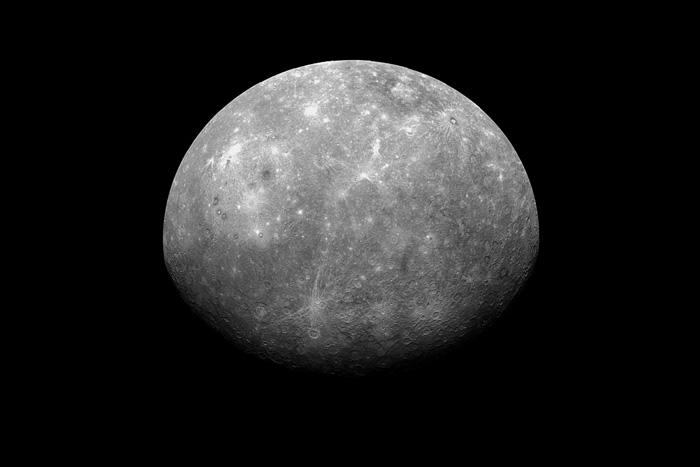
This image of the planet Mercury was captured by the NASA Messenger space probe. Credit: NASA/Johns Hopkins University
Contents
- Mercury’s orbit in relation to Earth’s orbit
- Mercury’s eccentric orbit can help increase separation from the Sun
- What is the ecliptic and how does it affect views of Mercury?
- Why is the ecliptic important when looking for the planet Mercury?
- Is it easier to observe Mercury from the southern hemisphere?
- What are the best conditions for viewing the planet Mercury?
- How bright is the planet Mercury?
- Where is the best place near me to view the planet Mercury?
- Upcoming greatest elongations of Mercury in 2024
- Summary
Mercury’s orbit in relation to Earth’s orbit
To help us find the planet Mercury, we first need to understand its orbit in relation to the Earth.
Mercury is one of two planets that orbit closer to the Sun than the Earth. The other is Venus. Planets that orbit closer to the Sun than the Earth are known as inferior planets, whereas planets that orbit farther from the Sun are called superior planets.
This is just the terminology astronomers use to describe these planets; they are no less important than any other planets in the solar system.
One key point about the inferior planets (Mercury and Venus) is that their orbits lie between the Earth and the Sun, and their movements largely follow the Sun’s path around the sky.
If we study an orbital diagram of the planet Mercury and Earth, we can better understand when we are able to view Mercury in the night sky.
There are 4 main points between the two orbits that we should consider. We will visit each one in sequence.
1. Superior conjunction – This is when Mercury is on the far side of the Sun relative to the Earth. It is very difficult to view Mercury in this position as it will be obscured by the Sun.
2. Greatest eastern elongation – As Mercury orbits it moves from behind the Sun and the separation between Mercury and the Sun increases as seen from the Earth. The separation increases until it reaches its greatest separation east of the Sun known as Greatest Eastern Elongation.
At this position, Mercury will set at its latest after the Sun in the evening sky. It will be possible to find the planet Mercury in the evening just after sunset.
3. Inferior conjunction – After Mercury has passed greatest eastern elongation in its orbit the angular separation between Mercury and the Sun begins to shrink again. This makes it increasingly difficult to separate from the glare of the Sun.
The disc of Mercury will also be transitioning to a crescent shape as less of its illuminated surface faces Earth, until eventually, its dark unilluminated side faces Earth, similar to a new moon.
It is typically not possible to observe Mercury at inferior conjunction.
However, there is one exception and this is during a solar transit. A solar transit is when Mercury passes directly across the disc of the Sun.
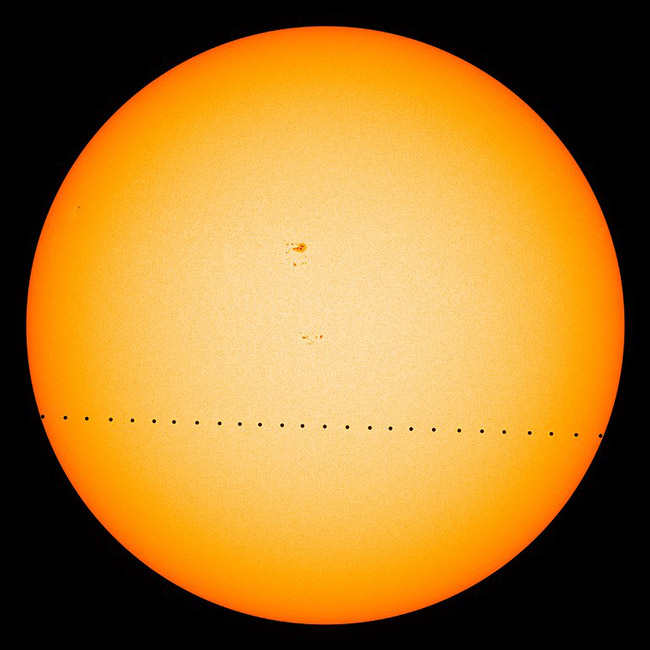
A solar transit of Mercury on 9th May 2016, Credit: Mbobra, CC BY-SA 4.0, via Wikimedia Commons.
Solar transits do not happen very often as the Earth’s orbit and Mercury’s orbit are inclined at about 7 degrees to each other. On most orbits Mercury will pass above or below the Sun’s disc but not directly across it.
Solar transits of Mercury can be as close as 6 or 7 years apart but often the interval is about 13 years. The next transit will occur on 13th November 2032.
4. Greatest western elongation – after inferior conjunction the separation of Mercury from the Sun begins to increase again but this time on the western side of the Sun. The separation increases until it reaches greatest western elongation and maximum separation west of the Sun.
At this position, Mercury will rise at its earliest before the Sun in the morning sky. It will be possible to find the planet Mercury in the morning just before sunrise.
In the days leading up to and immediately after greatest elongation Mercury’s separation from the sun will be at its largest providing you with several days of favourable separation from the Sun.
Mercury’s eccentricity can help increase separation
Mercury is the planet with the most eccentric orbit in the solar system.
This means that the planet orbits in an ellipse. The maximum possible angular separation from the Sun will increase or decrease depending on where Mercury and Earth are in their respective orbits.
The modified orbital diagram below illustrates this effect. If a greatest eastern or western elongation occurs whilst Mercury is at aphelion (furthest from the sun in its orbit) then the separation will be greater as viewed from Earth. The opposite will be true at perihelion (closest to the Sun in its orbit).
The eccentricity of Mercury’s orbit can increase Mercury’s separation at greatest elongation up to 27.8° at aphelion and narrow it to just 17.9° at perihelion.
If we only consider the separation angle from the Sun then it is easy to see that some greatest elongations of Mercury will be more favourable than others.
Below is a list of the upcoming greatest elongations of Mercury in 2024 and 2025 showing the variation in the separation angle from the Sun.
Date | Visible | Mercury - Sun separation | Apparent Magnitude |
|---|---|---|---|
12 Jan 2024 | Morning | 23.5°W | 0.0 |
24 Mar 2024 | Evening | 18.7°E | +0.1 |
9 May 2024 | Morning | 26.4°W | +0.7 |
22 Jul 2024 | Evening | 26.9°E | +0.7 |
5 Sept 2024 | Morning | 18.1°W | 0.0 |
16 Nov 2024 | Evening | 22.5°E | -0.1 |
25 Dec 2024 | Morning | 22.0°W | -0.1 |
8 Mar 2025 | Evening | 18.2°E | -0.1 |
21 Apr 2025 | Morning | 27.4°W | +0.6 |
4 Jul 2025 | Evening | 25.9°E | +0.7 |
19 Aug 2025 | Morning | 18.6°W | +0.2 |
29 Oct 2025 | Evening | 23.9°E | +0.1 |
7 Dec 2025 | Morning | 20.7°W | -0.2 |
The data in the above table was adapted from https://www.fourmilab.ch/images/3planets/elongation.html
A large separation angle is always helpful when trying to find the planet mercury, but it may not always be the most important factor, we also need to consider the ecliptic.
What is the ecliptic and how does it affect views of Mercury?
Perhaps the most important thing to consider when trying to find the planet Mercury when at its greatest elongation is the angle of the ecliptic to your local horizon.
The ecliptic is the path the Sun takes through the sky over the course of a year, not the path taken during the course of a day.
The ecliptic is a projection of the Sun’s position onto a background of stars when viewed from the Earth. As the Earth orbits the Sun its position changes, the circular path it scribes against the background of stars during the year is called the ecliptic.
Due to the Earth’s axial tilt of 23.4 degrees, the angle of the ecliptic is also tilted with respect to the Earth’s equator by the same amount. This tilt with respect to the Earth’s axis causes the position of the ecliptic in the sky to change throughout the year.
The exact position and angle of the ecliptic to your local horizon depends on 3 things: your latitude, the time of year and the time of day.
At equatorial latitudes the situation is straightforward, the ecliptic arcs right overhead from the eastern horizon to the western horizon, passing close to the zenith. It crosses the horizon at an almost perpendicular angle, as shown in the diagram below.
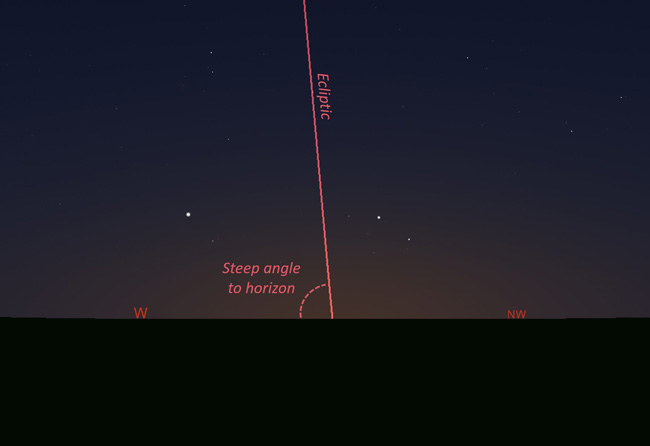
At equatorial latitudes, the ecliptic will make a steep angle to the horizon throughout the year.
At more northerly or southerly latitudes the situation is more complex.
At a latitude of 51 degrees north during the summer solstice, the arc of the ecliptic will be positioned high in the sky around noon. At this time, the sun will also reach its highest position in the sky for the year. As the day progresses into the afternoon the ecliptic will descend until it hovers close to the horizon during the evening and night hours, forming a low angle to the horizon.
The opposite is true at the winter solstice, the arc of the ecliptic will be positioned lowest in the sky at noon, but highest in the sky at midnight.
The wide-angle views, stretching from east to west, below illustrate how the time of day and time of year affect when the ecliptic arc is highest, viewed for a latitude of 51 degrees north.
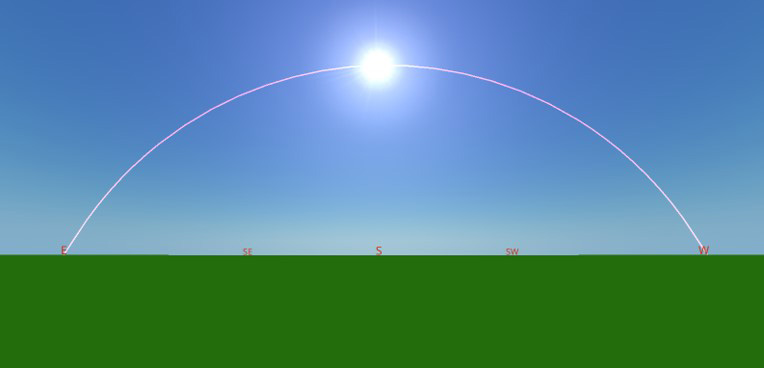
The ecliptic makes its highest arc at noon on the summer solstice in June (51°N).
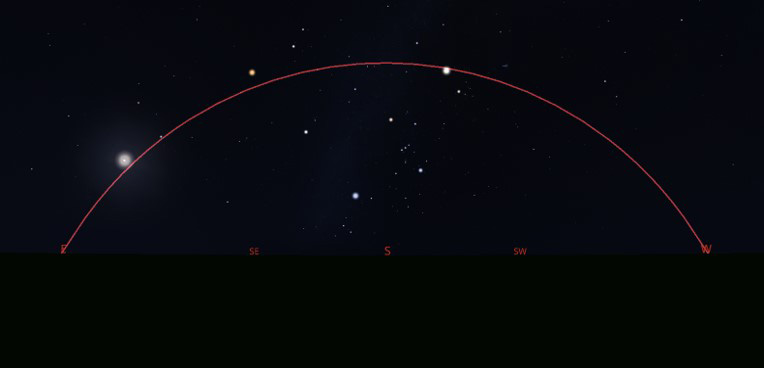
The ecliptic makes its highest arc at midnight on the winter solstice in December (51°N).
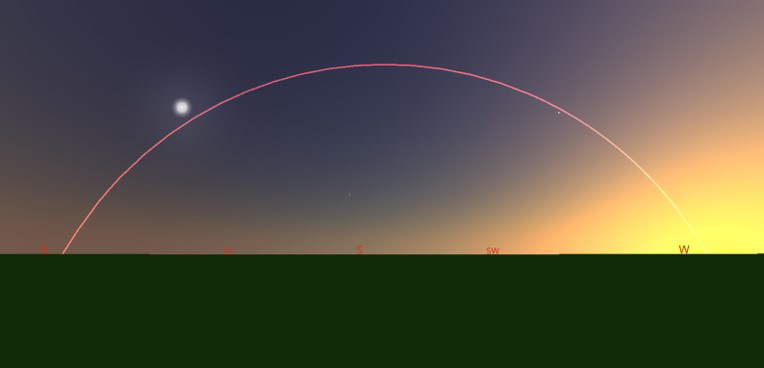
The ecliptic makes its highest arc at dusk at the spring equinox in March (51°N).
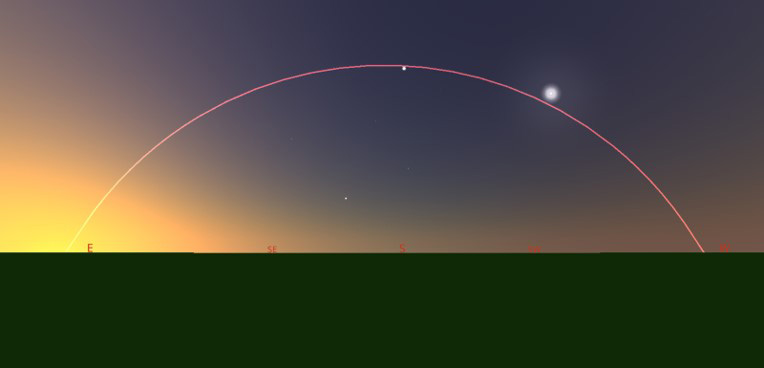
The ecliptic makes its highest arc at dawn during the autumnal equinox in September (51°N).
For southern hemisphere observers if you shift the date by 6 months you will get the equivalent ecliptic arcs, i.e. highest arc at noon will coincide with the southern summer solstice in December.
You can follow the angle for the ecliptic with a stargazing app, such as Stellarium or Sky Safari. These apps have options that allow you to switch on the ecliptic path and by changing the time and date you can see how the ecliptic’s position will vary at your location throughout the year.
Why is the ecliptic important when looking for the planet Mercury?
All the planets in the solar system, including the Earth, formed 4.5 billion years ago from the same rotating proto-planetary disc of dust and gas.
This means that all the planets orbit around the Sun in a similar plane to the Earth, close to the ecliptic, typically within just a few degrees.
Mercury’s orbit is inclined by an angle of 7 degrees to the ecliptic plane. This small angle is helpful for finding the planet Mercury in the night sky, as it will always be located within 7 degrees of the ecliptic.
The separation angle from the Sun is also measured along the ecliptic, so when you read that the greatest western elongation of Mercury will have a separation of 20 degrees, then Mercury will appear 20 degrees west of the Sun along the ecliptic.
The best views of Mercury occur when the arc of the ecliptic is high in the sky making a steep angle to the horizon. If this coincides with a greatest elongation then there is a good chance you will be able to spot Mercury.
If the angle of the ecliptic is low to the horizon, then even with a favourable separation angle from the Sun, Mercury will still appear low above the horizon and will be easily obscured by the glare of the Sun.
It is easier to observe mercury from the southern hemisphere?
Yes, and it is related to the eccentricity of Mercury’s orbit.
If we bring together the concepts of Mercury’s elliptical orbit and how the position of the ecliptic changes we find that there is an unfortunate twist that makes it much more difficult to view Mercury from the northern hemisphere.
If we look at the orbital diagrams again but now mark the months when the Earth will be in a certain position in its orbit relative to Mercury’s orbit we can see that the widest and narrowest separations occur in March and September.
In March the best separations occur when Mercury is at aphelion (position 1 above), in this position Mercury will appear east of the Sun. Greatest eastern elongations are visible in the mornings before sunrise.
For northern hemisphere observers on March mornings the ecliptic is at a low angle to the horizon as described above, but it will be high for southern hemisphere observers allowing them to make the most of the wide separation of Mercury from the Sun.
When Mercury is at perihelion in March (position 2 above) Mercury will appear west of the Sun. Greatest western elongations are visible in the evenings after sunset.
For northern hemisphere observers the ecliptic will be high in the sky during the evening in March, but unfortunately this will always coincide with the more narrow separation angle that occurs at perihelion, so Mercury won’t rise as high above the horizon as it can at aphelion.
A similar situation occurs in September, positions 3 and 4 above, but the timings are switched i.e. September mornings for northern hemisphere observers when Mercury is at perihelion and September evenings for southern hemisphere observers when Mercury is at aphelion.
What are the best conditions for viewing the planet Mercury?
The best conditions to find the planet Mercury occur when the following conditions are met:
- When there is a large greatest elongation angle (separation angle from the Sun). Eastern elongation visible in the Morning, western elongation visible in the evening.
- When the ecliptic arc is high in the sky at sunrise (for western elongations) or at sunset (for eastern elongations). This is less of a problem for more equatorial latitudes.
- There are clear skies down to the horizon. There is more atmosphere to look through at low angles so there is a greater chance of cloud or haze obscuring your view.
If you are lucky enough to have all three of these conditions met, then it’s time to start planning your Mercury spotting session!
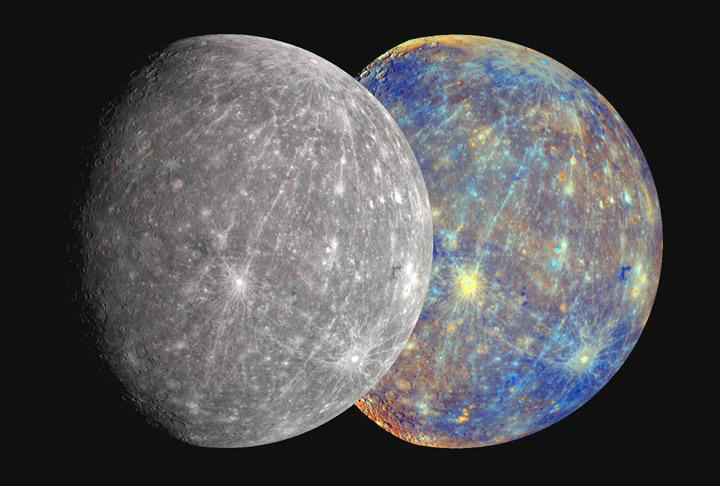
Mercury in colour. This false coloured image helps scientists to analyse the various chemical and geological differences across Mercury’s surface. Credit: NASA/Johns Hopkins University
How Bright is the Planet Mercury?
Mercury can be seen easily with the naked eye.
It is one of the five naked-eye planets that have been known since ancient times. Named after the Roman God Mercurius, messenger of the Gods.
Mercury has a maximum brightness of magnitude -2.48, which occurs around superior conjunction when the fully illuminated face of Mercury faces the Earth. However, as discussed above, at superior conjunction Mercury will be close to the Sun and more difficult to spot, despite its brightness.
At greatest elongation Mercury will appear in a gibbous or half phase. With less of its illuminated side facing the Earth its brightness will have dropped to around magnitude 0.0. But viewing conditions will be more favourable due to the larger separation from the Sun allowing you to view Mercury against a darker background.
Mercury will begin to brighten again after inferior conjunction as it moves to western elongation.
Where is the best place near me to view the planet Mercury?
Even at its greatest elongation and with a favourable ecliptic angle Mercury often still appears low above the horizon in the twilight sky.
The best opportunity to view Mercury is to find a viewing location with a low, unobstructed horizon.
If you live in a city you may wish to find an open park or drive to a more rural setting away from obstructions and high-rise buildings.
Alternatively, if you can get to an elevated position this could have the same effect.
Upcoming Greatest Elongations of Mercury in 2024
Below are some simulated views of the upcoming greatest elongations of Mercury in 2024. I hope these can help you find the planet Mercury from your location.
Mercury – greatest eastern elongation 24th March 2024
Visible in the evening after sunset, this is one of the best opportunities to see Mercury from the northern hemisphere this year!
Max separation from Sun 18.7°E
Magnitude at elongation +0.1
Tip: Mercury will be between Jupiter and the horizon along the ecliptic.
Mercury – greatest western elongation 9th May 2024
Visible in the morning before sunrise, best from the southern hemisphere. Poor from the northern hemisphere.
Max separation from Sun 26.4°W
Magnitude at elongation +0.7
Tip: For southern observers, Mercury will be visible well before sunrise against a dark background.
Mercury – greatest eastern elongation 22nd July 2024
Visible in the evening sky after sunset, best from the southern hemisphere. Poor from the northern hemisphere.
Max separation from Sun 26.9°E
Magnitude at elongation +0.7
Tip: For southern observers, Mercury will appear above the brighter planet Venus in the evening sky.
Mercury – greatest western elongation 5th September 2024
Visible in the morning sky before sunrise. Another good opportunity to spot Mercury from northern hemisphere in 2024.
Max separation from Sun 18.1°W
Magnitude at elongation +0.0
Tip: Get up well before sunrise for this one and ensure you have a clear view of the horizon.
Mercury – greatest eastern elongation 16th November 2024
Visible in the evening sky after sunset, best from the southern hemisphere. Poor from the northern hemisphere.
Max separation from Sun 22.5°E
Magnitude at elongation -0.1
Tip: Good elevation above the horizon from the southern hemisphere and at the equator.
Mercury – greatest western elongation 25th December 2024
Visible in the morning sky before sunrise. Possible opportunity for everyone to spot, but still better in the southern hemisphere or at the equator.
Max separation from Sun 22.0°W
Magnitude at elongation -0.1
Tip: A festive opportunity to find the planet Mercury.
Summary
Mercury is one of the more frustrating planets to find in the night sky, mainly due to its proximity to the Sun with only brief windows of opportunity to spot it against bright twilight skies.
As described in more detail in this post there are things you can do to increase your chances of finding the planet Mercury, these can be particularly helpful for northern hemisphere observers who are at a disadvantage.
1) Check when the next greatest elongation of Mercury will be. Due to Mercury’s short orbit of just 88 days and a synodic period of 112 days, it will pass through the stages of its orbit quickly providing several opportunities throughout the year when Mercury will be in more favourable positions. See the table of greatest elongations above.
2) Mercury closely follows the path of the ecliptic. Check the position and angle of the ecliptic at your location. There are good opportunities for northern hemisphere observers in spring and autumn when the angle of the ecliptic will be steep at dusk and dawn respectively, making it that bit easier to find the planet Mercury.
3) Find an open area with low and unobstructed horizons. Mercury will often appear low in the sky, so don’t let tall buildings and obstructions, such as trees, block your view.
Mercury is the smallest planet in the solar system so even with large telescopes the views from Earth are often mediocre at best. It is better to spot Mercury with the naked eye against the twilight sky and then use a pair of binoculars to enhance the view.
The challenge and reward is being able to find the planet Mercury. I hope the information in this post will help you achieve this.
Good luck and happy Mercury hunting!
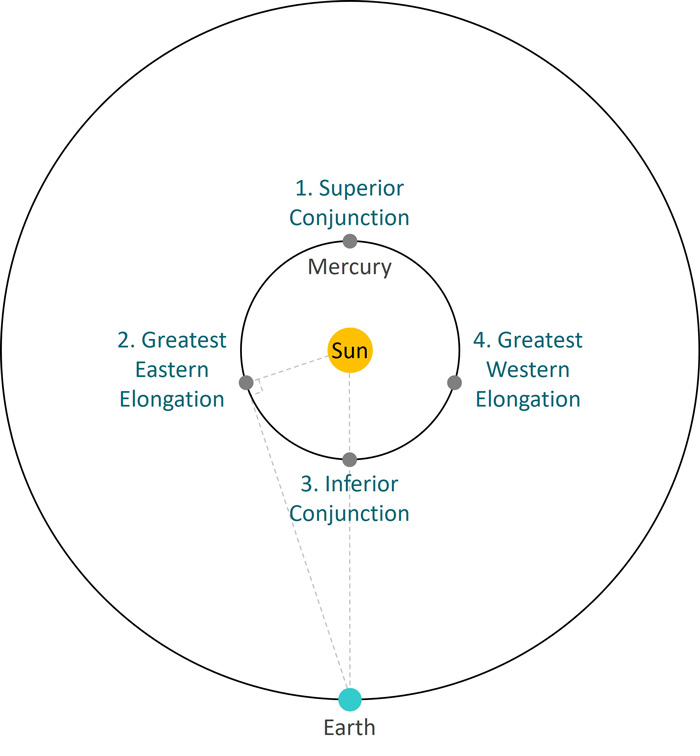
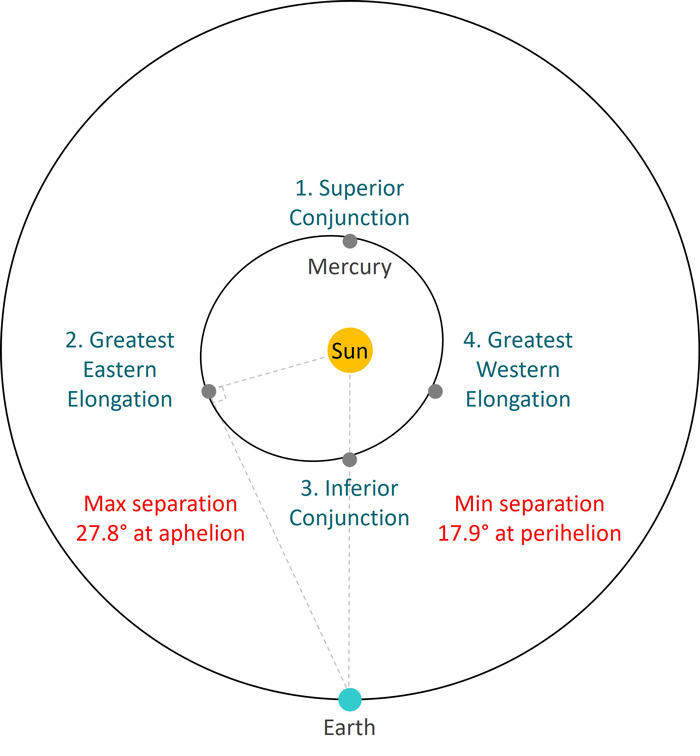
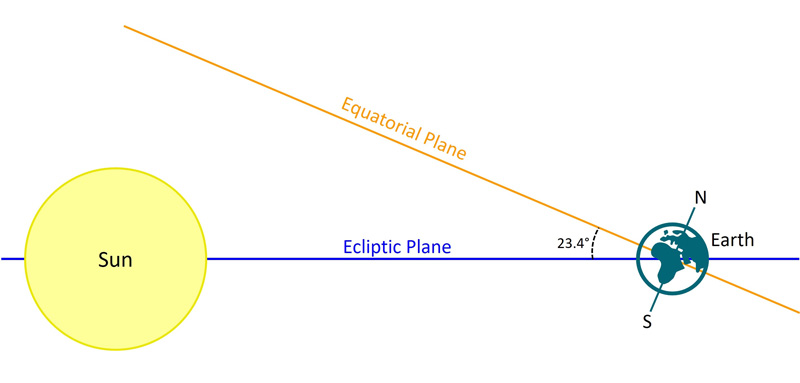
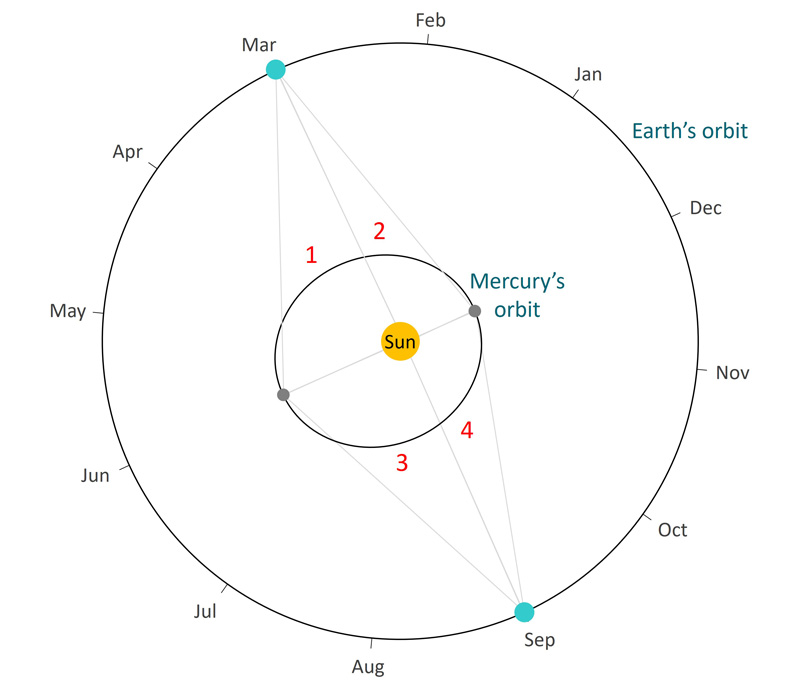
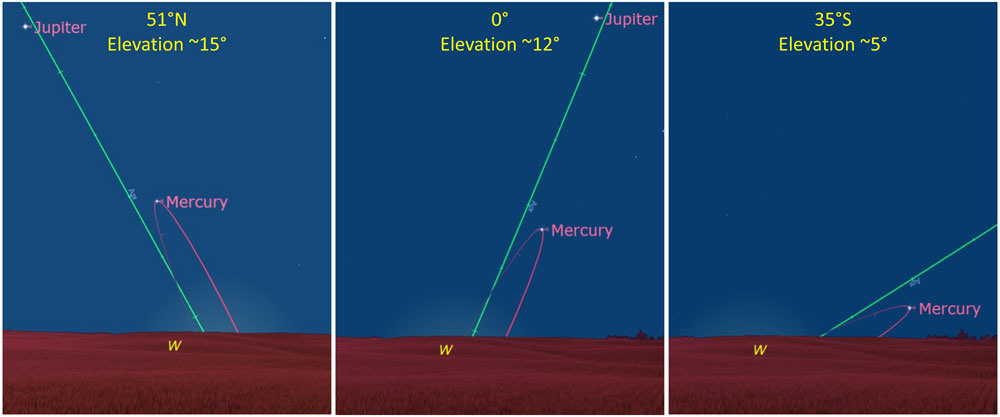

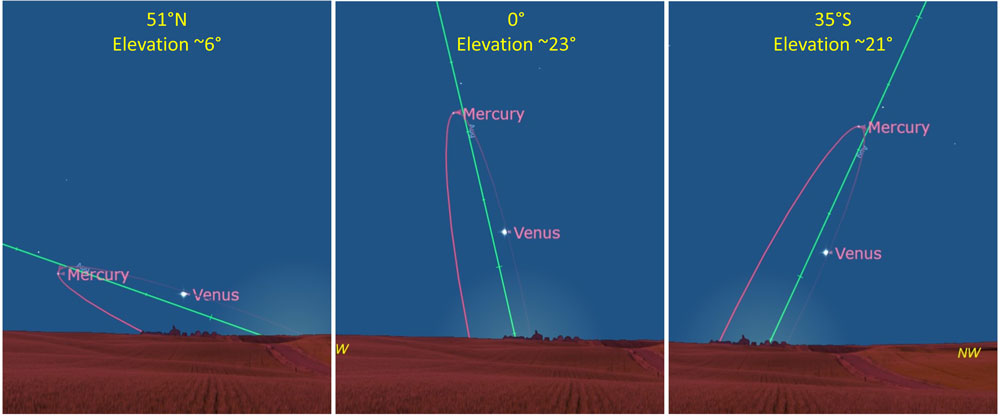
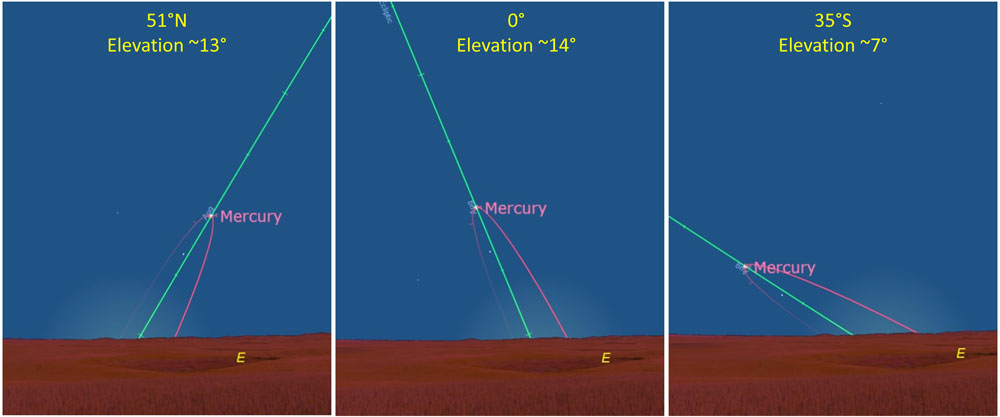
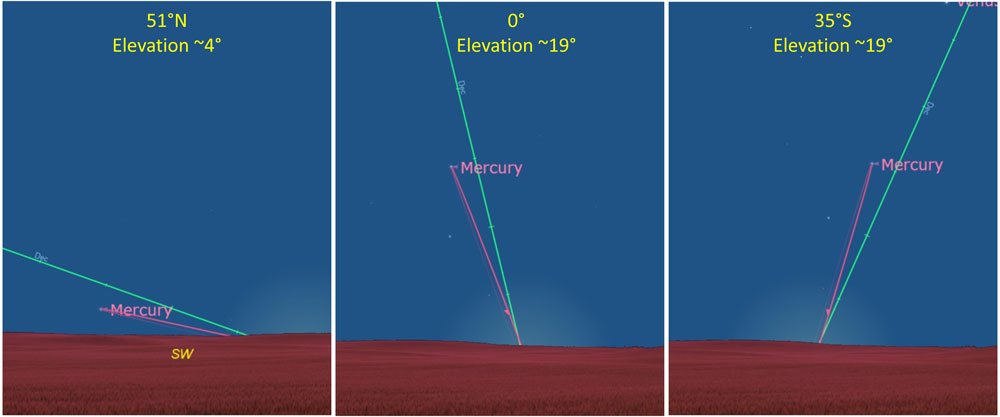
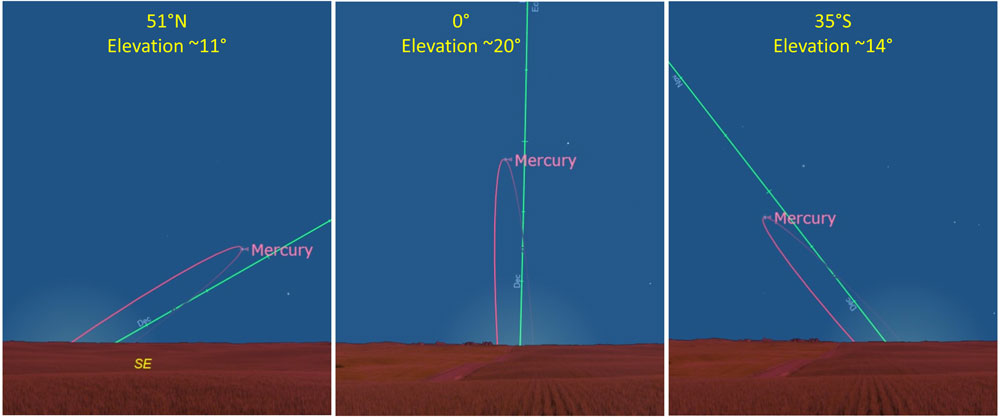
0 Comments